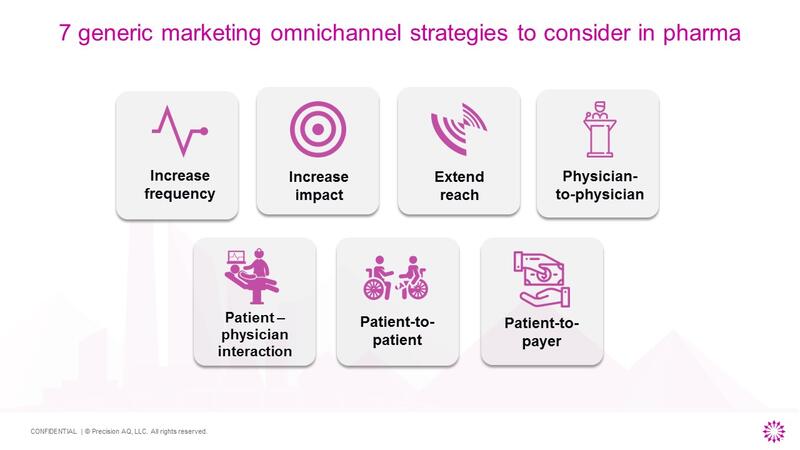Many pharmaceutical companies still struggle to achieve a substantial return on investment from their digital marketing initiatives. One of the reasons for this is the lack of clear objectives and strategies that inform and underpin these initiatives.
According to Vladimir Rogiers and Olga Duvillard, CELforPharma faculty members of Strategic Omnichannel for Pharma Marketing, there are 7 key strategies to achieve your marketing objectives in pharma. Of course, you can combine two or three of these strategies. But it is important to understand the difference as some tactics are better suited to support a selected strategy than others.

Increase frequency
In a highly competitive market, a focus on the number of effective interactions is essential to establish brand presence and stay top-of-mind. You can increase the number of interactions with your existing physicians by leveraging multiple low-touch channels, creating a synergy of digital and face-to-face interactions.
Increase impact
Make every encounter count more. Especially for complex diseases or brands it is critical to create effective face-to-face interactions. This can be done by equipping reps with iPads or other digital tools and using them before, during and after the call. Rep-initiated email can further enhance the impact of the interaction by providing additional value to the physician through rich-media and personalised content.
Extend reach
Extending reach beyond F2F means getting to customers you are currently not seeing. This approach is particularly relevant in situations with limited salesforces or when access to physicians is challenging (whether due to ‘no-access’ issues or geographical difficulties). Extending your reach beyond the face-to-face interactions with physicians can be achieved by utilising digital channels and/or leveraging other influential stakeholders, such as nurses or pharmacists.
Physician-to-physician interaction
Peer-to-peer interaction (or “social selling”) is an effective way to build advocacy and credibility for a new product or treatment class by helping HCPs connect with one another to personally endorse key messages. Leveraging well-known KOLs or specialists can establish the credibility of your brand or treatment. This strategy is particularly effective in pre-launch or launch phases or for orphan drugs.
Patient–physician interaction
Another potential strategy is to establish yourself as service provider by setting up platforms for patients and physicians. This strategy is particularly useful in situations where disease awareness is limited, or suboptimal treatment is prevalent.
Patient-to-patient interaction
You can also set up platforms for patients to find each other and interact. This strategy is most useful for orphan diseases or diseases where patient associations are lacking.
Patient-to-payer interaction
Another omnichannel strategy consists in connecting patients to payers. This strategy can be useful e.g. when the reimbursement burden is heavy and/or when patient associations are lacking.
By consciously choosing from and combining the seven strategies mentioned above, pharmaceutical companies can establish brand presence, build credibility, and increase interactions with physicians, ultimately driving revenue growth. To achieve maximum impact, it's essential to develop a clear omnichannel strategy that leverages an optimal mix by integrating both digital and face-to-face channels effectively.

